- Harry Talbot: Capturing the Tour de France
-

The Tour de France is a 21 stage bike race through France and surrounding countries over three weeks in July; a different stage raced each day. The athletes race over mountain passes in the Alps, on the cobblestones of Northern France and in 40 degree temperatures. Since picking up a road bike at 15 and buying my first camera a Canon EOS 600D around the same time it has long been a dream of mine to photograph the race.
I started shooting cycling in 2019, showing up to local club racing and floating around with my camera shooting as much as I could. In 2020 I took on my first paid cycling race and from there began shooting more and more cycling races, talking to professionals in the industry and learning from everyone I met. At the beginning of 2022 I headed to Europe where the professional season is based, to live and work as a freelancer for four months shooting as much cycling as I could. After covering several early season races successfully I had my media accreditation for the Tour de France approved at the beginning of June. To shoot at this level you need either a valid press card or a letter of assignment from a reputable organisation.
The 2022 Tour began the furthest from France the race has ever ventured, beginning in Copenhagen, arguably the capital of cycling. I stayed in an apartment outside the city centre and my Tour started the evening before prepping my gear for three chaotic weeks to come. I had two bodies, a Canon EOS R5 and EOS R6, four lenses, a 70-200mm f/2.8, a 16-35mm f/2.8, a 300mm f/2.8 and a fish eye 8-15mm f/4. Most notably I had left my 24-70mm back in New Zealand in order to travel as light as possible, I missed it once or twice but I made do.
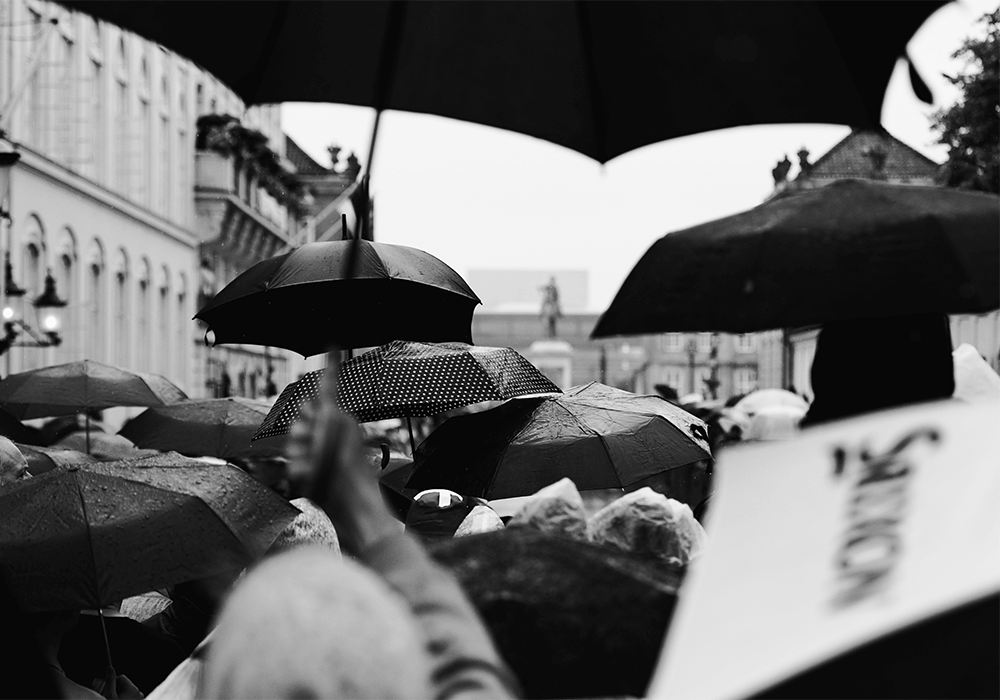
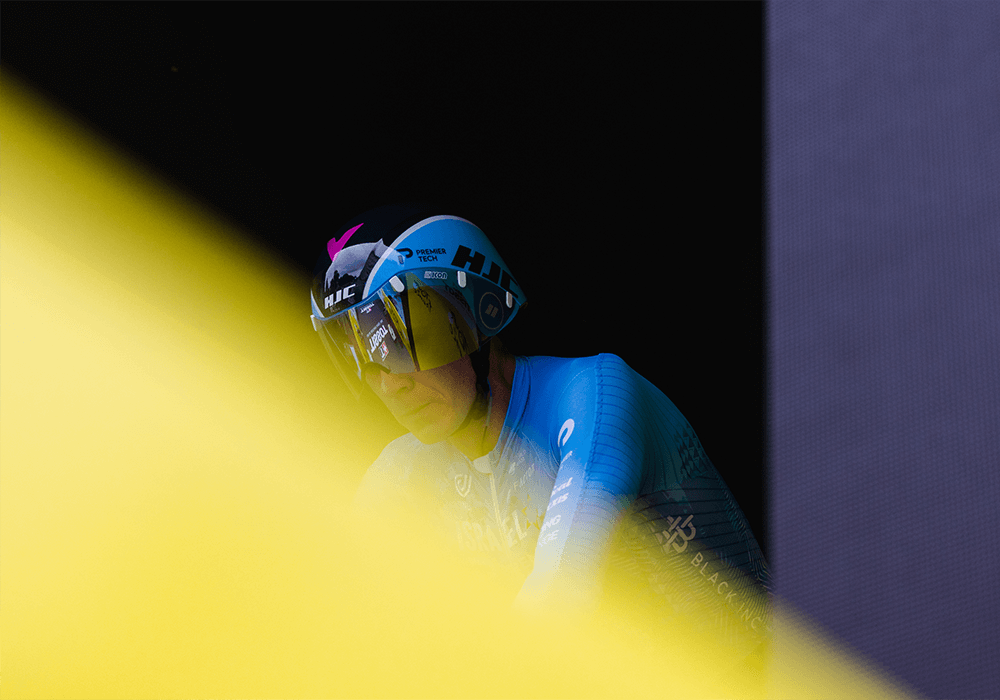
Stage one poured with rain, it didn’t stop the Danish fans from lining the roadsides of Copenhagen at least four deep, fuelled with quality Danish beer they cheered loudly as eventual tour winner and Dane Jonas Vineegarrd raced by. The stage was a time trial meaning each rider races individually against the clock in oder to set the fastest time. This resulted in three hours of shooting for me, I never enjoy leaving my cameras exposed in the rain for that long but thankfully the Canon weather sealing always seems to hold its own.
The next few days took us further south into Denmark with a transfer day to northern France. The shooting opportunities were limited, the riders race point to point and as photographers we must leapfrog the peloton on public roads to get ahead again on the race route, sometimes you have as little as one opportunity a stage before shooting at the finish.
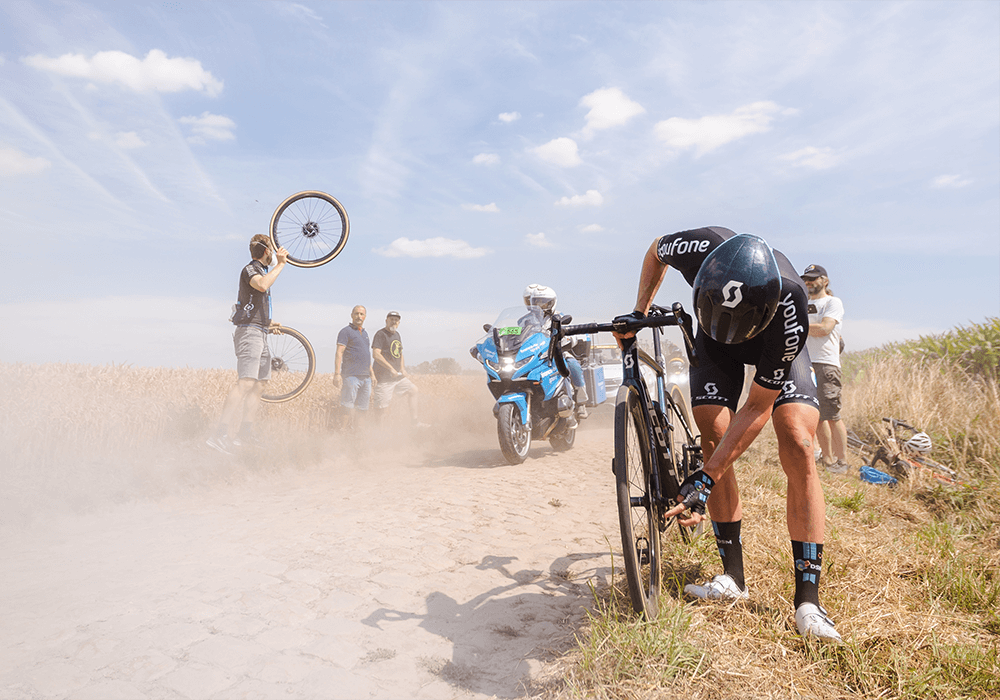
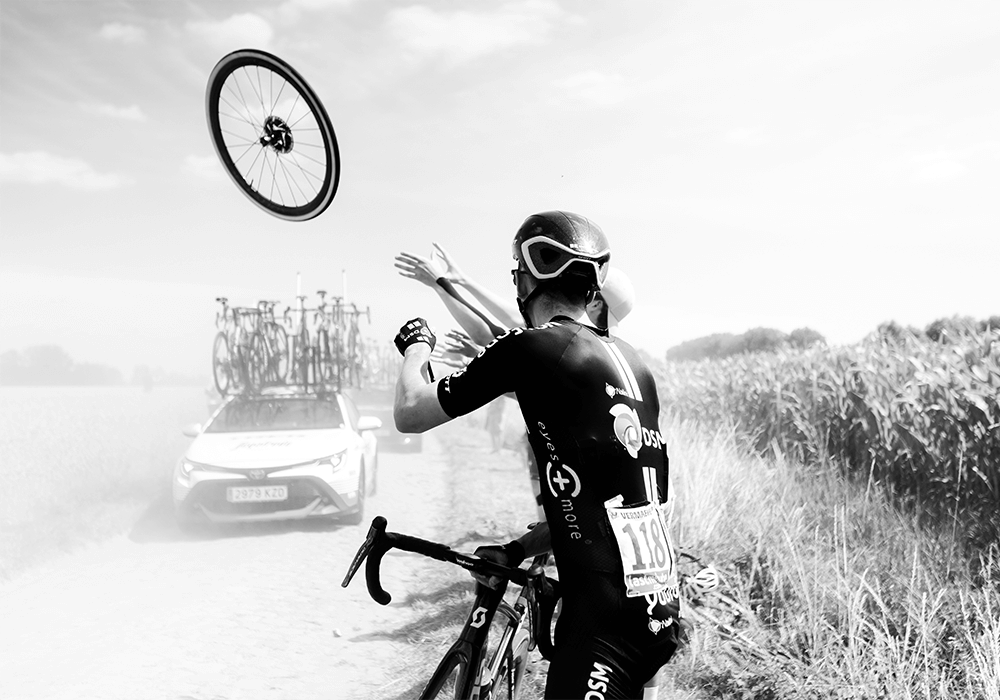
Stage five and the race took on the old cobblestones of northern France. It's hard to describe how brutal these are to ride; it makes for a whirlwind of drama within the race. I happened to be in the right place at the right time when a rider punctured in-front of me, his mechanic unable to cross the road as the team cars followed behind, he threw the spare wheel over the road ahead of the Trek team car. I’ve never seen anything like it and was lucky to be there with the best tools to dare I say it… capture the moment. A late night editing before an even later dinner at McDonald’s I found a place to sleep in the car beside the French motorway, despite shooting the largest annual sporting event it’s not always a glamorous lifestyle.
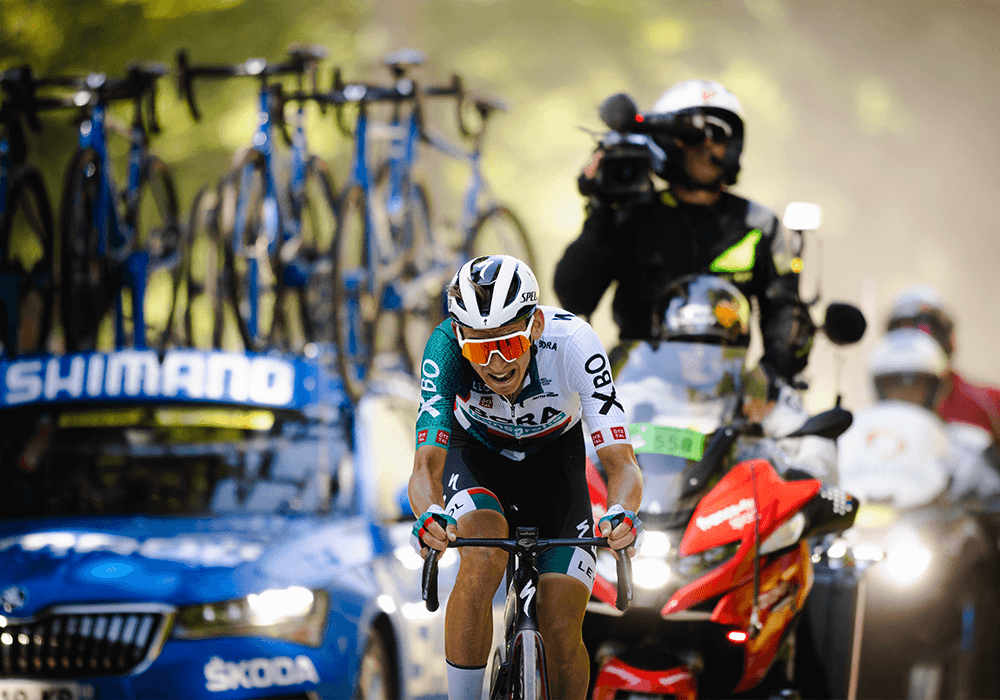
Skip ahead several days to stage 11, my favourite of this year’s tour. The race passed over the Col du Galibier a mountain pass in the French Alps. It was a tough call choosing to skip the finish, due to the limited number of roads in the mountains it wasn’t possible to shoot on course and at the finish. The landscape was barren and rocky but lined with fans despite being at 2600m of altitude. The advice Jered Gruber, a legend in the world of cycling photography gave me back in 2018 was to always keep moving. I have always agreed with that and applied it as often as I can, I find often as sports photographers we can become lazy and complacent, settling earlier for a spot that works, I always want to create the best work I can and often that means constantly searching for ways to improve it, moving is a big part of that. Joined by two great friends that evening I edited under the sunset and we slept on the mountain, the best way to cure a little homesickness.
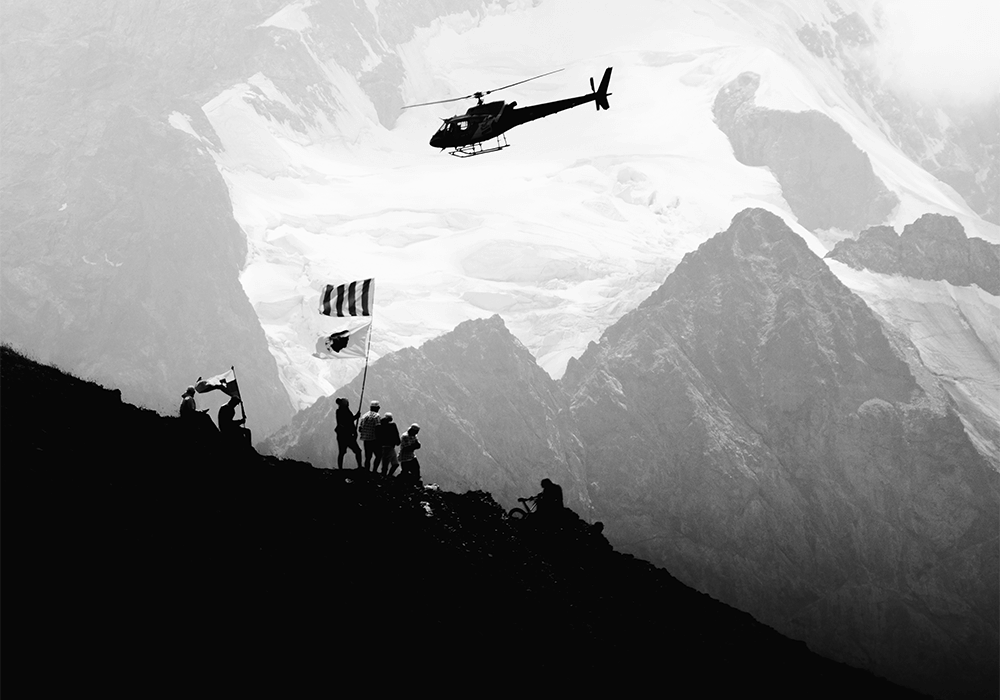
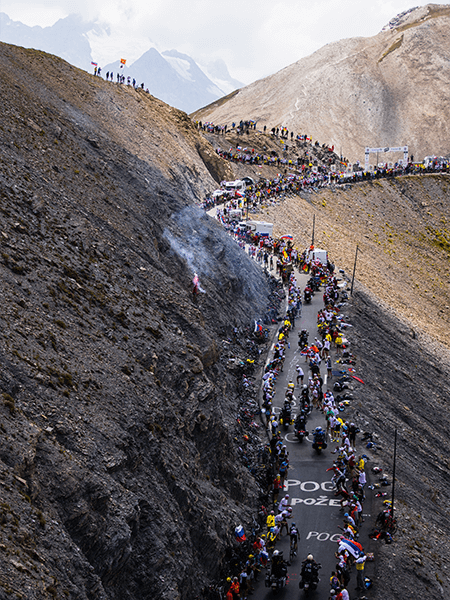
Stage 12 and 13 weren't great days for me however things took for a better turn during stage 14 to 16. It’s a mixed bag when you’re shooting everyday, covering the Tour means there is so much out of your control, it’s impossible to locations scout over 3500km of road so bad days are a part of it, I’m trying my best to be okay with that while enjoying the good ones when they came.
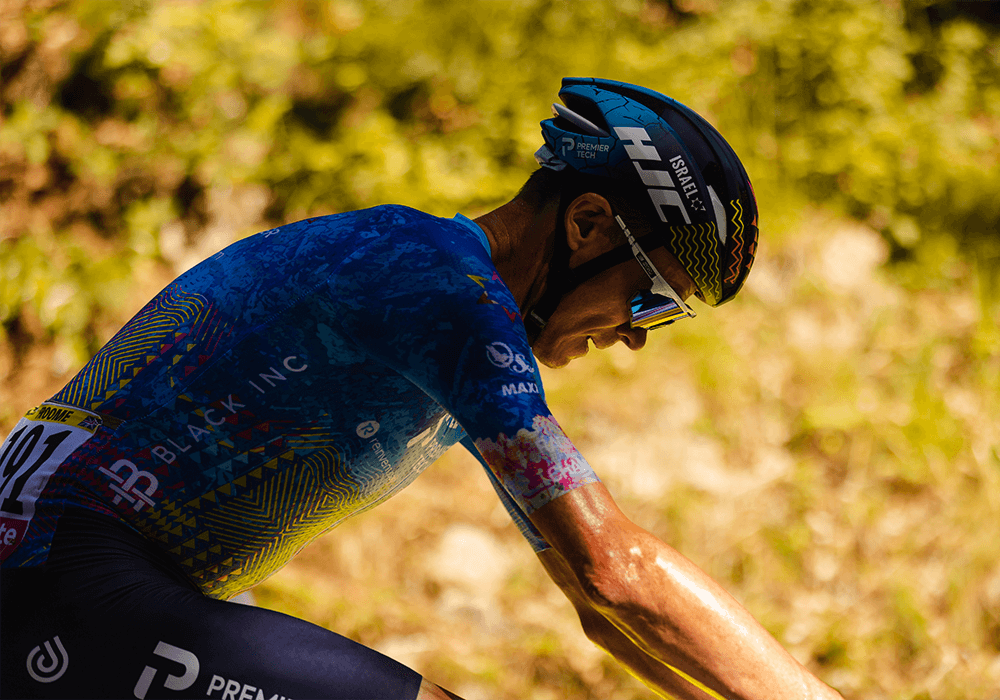
Over the next few stages the race headed into the Pyrenees, the mountain range bordering France, Spain and Andorra. The opportunities to shoot were limited and making the most of every chance became more important as the race reached it’s climax. I think a huge part to taking good photographs is understanding the subject, with the Tour for example I need to know who the riders are, who is likely to win, and where the most dramatic racing of the day is likely to take place among other things.
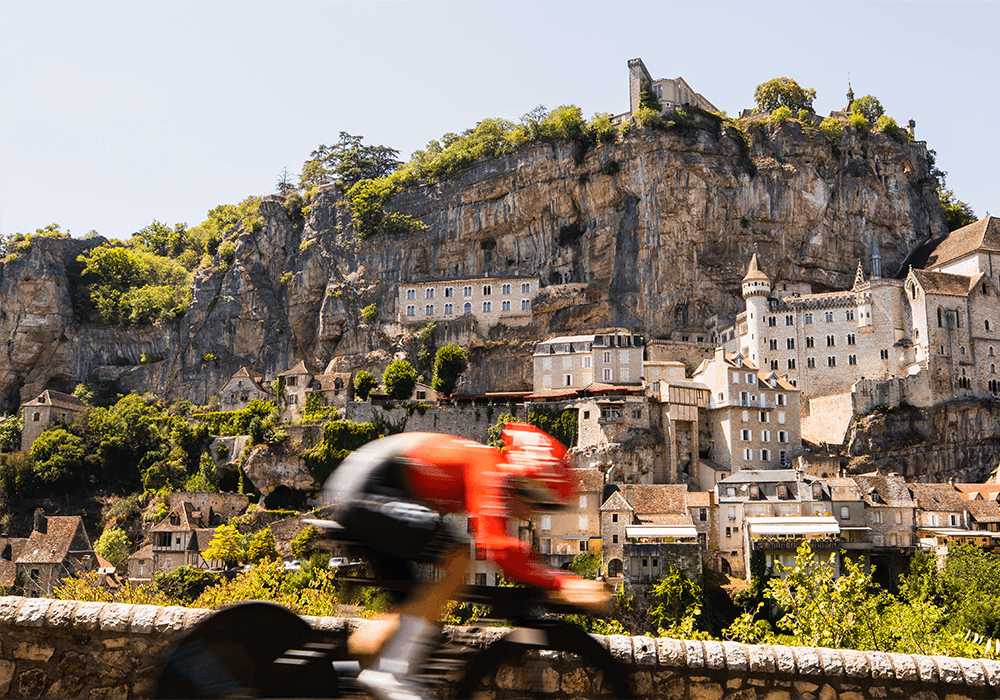
The penultimate stage before the ceremonial race into Paris finished in a small French town called Rocamadour, I struggle to remember the countless towns the Tour passed through, I saw so much of the country but at the same time it’s a fleeting visit here and there. Rocamadour I remember, the buildings are carved into a huge cliff overlooking the river in the valley below, If you get the chance I’d recommend a visit, there’s an incredible ice cream shop that comes to mind also. I loved shooting during that stage and left with some of my favourite images from the race. With a long drive north after the stage I edited that evening in a McDonald’s on route to Paris, by that point of the race I had my workflow dialled. Rating my images in camera as the stage played out, uploading my selects into Lightroom applying my presets as I did before making individual tweaks to each image. It was always a late night but I’m thankful for todays technology meaning I’m not developing negatives early into the morning.
I felt relief as the last stage began in Paris, shooting for 21 days was incredible but it’s taxing on your body and mind, I was ready for a break. The race passes the iconic Arc de Triomphe and I had only one shot on my hit list that day, the peloton blurred as the sun hits the side of the Arc. Battling the heat and evening sunshine I barely made it through the hour long final podium before my first Tour was wrapped.
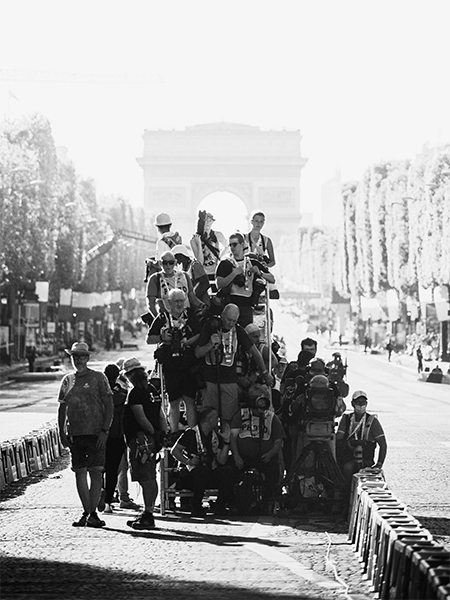
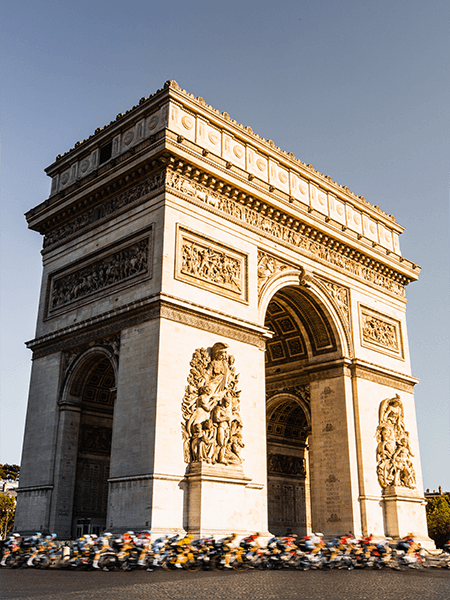
In summary shooting the Tour was a crazy experience, I learned so much about myself, photography and cycling. I was living very much in a bubble, everyday my focus was on the same things, where to shoot, how to get there, where to eat and where to sleep, as I got deeper into the race these things consumed all the brain power I had left. It’s taxing shooting everyday for so long while having the logistical challenges alongside it, in all honesty though, it felt completely worth it when I came away at the end of the day with a photo I liked.
There’s a few things I’d say to anyone wanting to photograph top level sports. Firstly shoot it as often as you can, whether it’s with friends practicing or local events, build a strong portfolio and use it to leverage access to more work or better events. Secondly, learn everything you can about the sport, know the locations, the athletes and the tactics, learn how it all influences the sport and find the best way to shoot it. Thirdly, network and meet as many people in the sport as you can, the more people you have on your side supporting you the easier and more fun it’ll become. Finally just enjoy it, keep remembering why you love shooting and have fun while you’re there.
Since arriving back in New Zealand many people have asked me what’s next. For now I plan to ride my bike often while taking my cameras with me on as many outdoor excursions as possible. I’ll be back in Europe for the 2023 season, ready to keep chasing my dream of double summer.
Harry is a professional photographer from New Zealand working internationally. He covers professional cycling season and shoot commercially alongside it. Harry goes where his work takes him, living with his bike, cameras, and a tent. He loves being outdoors and constantly find himself chasing adventure. Harry's favourite projects involve mountains, nature and happy people.
Find out more about Harry and his work on his website and Instagram. Explore the Cameras and Lenses that Harry uses.

Canon Ambassador, Alisha Lovrich shares her journey into sports photography as a female photographer.

EF lenses vs RF lenses- We explore the top 5 reasons why Canon’s RF system of lenses offers superior quality compared to EF lenses. How to choose which is best for you.

Learn how the Canon EOS R5 and EOS R6 full frame mirrorless cameras stack up against each other. Tech, specs, features, functions and more.